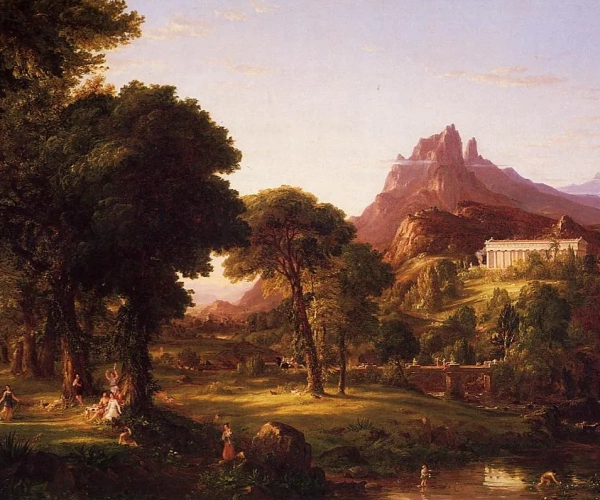Dream of Arcadia
Thomas Cole's "Dream of Arcadia" is a masterful representation of the artist's contemplation of the idyllic landscape. Painted in 1838, the artwork captures an idealized vision of nature and Arcadian beauty. Cole, as a prominent figure of the Hudson River School, sought to express the unspoiled magnificence of the American landscape, and "Dream of Arcadia" exemplifies this ambition.
The painting reveals a tranquil, serene landscape with a harmonious blend of elements - towering trees, meandering streams, and distant rolling hills, all bathed in the soft hues of twilight. The play of light and shadow creates a sense of ethereal enchantment, spurring the viewer's imagination and evoking a nostalgic yearning for an idyllic past or a utopian future.
The symbolic significance of "Dream of Arcadia" lies in its portrayal of the tension between the untamed wilderness and human civilization. By presenting an unspoiled natural world, Cole invites contemplation on the impact of human intervention and industrialization. The Arcadian theme encourages reflection on the potential for a return to a simpler, more harmonious relationship with nature.
Through "Dream of Arcadia," Cole invites viewers to step into a realm of tranquility and contemplation, challenging them to consider the delicate balance between humanity and the natural world. The artwork not only showcases Cole's exceptional technical skill but also conveys a timeless message about the intrinsic beauty and value of unspoiled landscapes, making it a significant piece in the art historical context.







No Comments Yet...